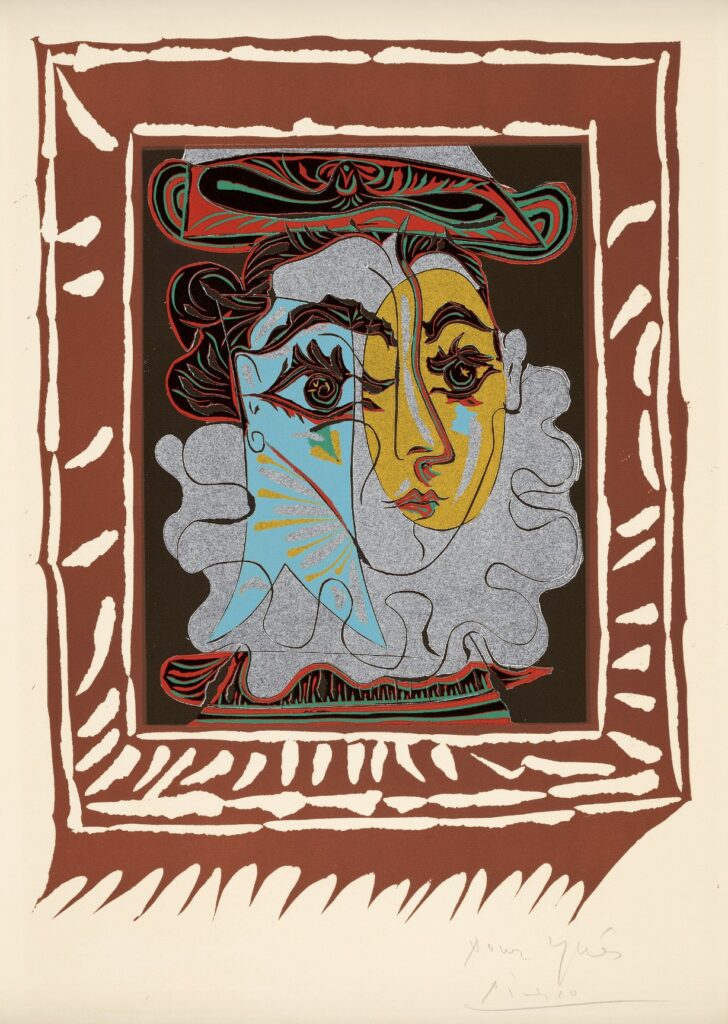

During the late 1950s period that some call the Vauvenargues – named for Picasso’s newly acquired fourteenth century château-atelier, located at the foot of the iconic Mont Sainte-Victoire near Aix-en-Provence – Picasso made linocuts. Jacqueline, his second wife, and the abundant phenomena of life in the Mediterranean, an echo of childhood in his native Spain, became muses-in-chief.
In 1962, about a year after his marriage to Jacqueline, Picasso made a series of linocut portraits, all stylistically similar and following each other in swift succession. In these, you can see the clear reflection of his muses. Perhaps the most spectacular in color and technique is B1145, shown above. It is often titled with an ambiguous reference to a “woman,” though there is no mistaking the discerning lines of Jacqueline’s features, her stately, somber stare, and the tender familiarity with which these are rendered. We can only speculate what may have occurred over the course of days Picasso made these prints – perhaps it was a handheld walk by the sea, or an evening meal spent swathed in the pink glow of the setting sun; in any case, Picasso seems to have been struck with the idea that warm, rich color could more deftly capture his subject than previous attempts. In B1145, Jacqueline’s face is defined by planes of Mediterranean blue and golden sunshine light whose glare is shaded from her eyes by her vibrant hat. The contrasting white ruff around her neck and the bold terracotta-colored frame reach back in time, back to Spain, and speak to elegance and timelessness. The work is among Picasso’s most elaborate in color; despite inventing and mastering the technique of using only one, the image’s complexity required him to use two linoleum sheets to register seven different colors.
Interestingly, this impression is dedicated not to his muse and subject, but “pour Inés,” softly put in pencil in the lower right corner of the paper. But who was Inés – another muse? Not quite. Inés Sassier had been employed in Picasso’s household since the mid-1930s, after meeting the artist on a trip to Mougins. She came to Paris to be a housekeeper at Picasso’s Rue de Boétie rooms, and stayed for all that was to come in Picasso’s life. This included the women who defined his great eras of art, whom she must have known closely; you’ll find photos of Inés in the garden snapped by Dora Maar, intimate portraits sketched on paper by Francoise Gilot. Through the years, Inés is said to have become a friend and confidant of Picasso – a constant and important figure in his everyday life. If she did not show up in his images as subject, it is not hard to imagine that their conversations, her ideas and presence, may have colored Picasso’s work in other ways.
Who knows why Picasso decided to dedicate this print to Inés. Perhaps, as his friend and confidant, and someone who had seen other women through Picasso’s life, she’d encouraged Picasso to see Jacqueline in a new light.
Courtesy of John Szoke Gallery, New York.
